Eight blocks southwest of Casa de la Corte (see Part 1) are two other reliquias of stone and concrete.
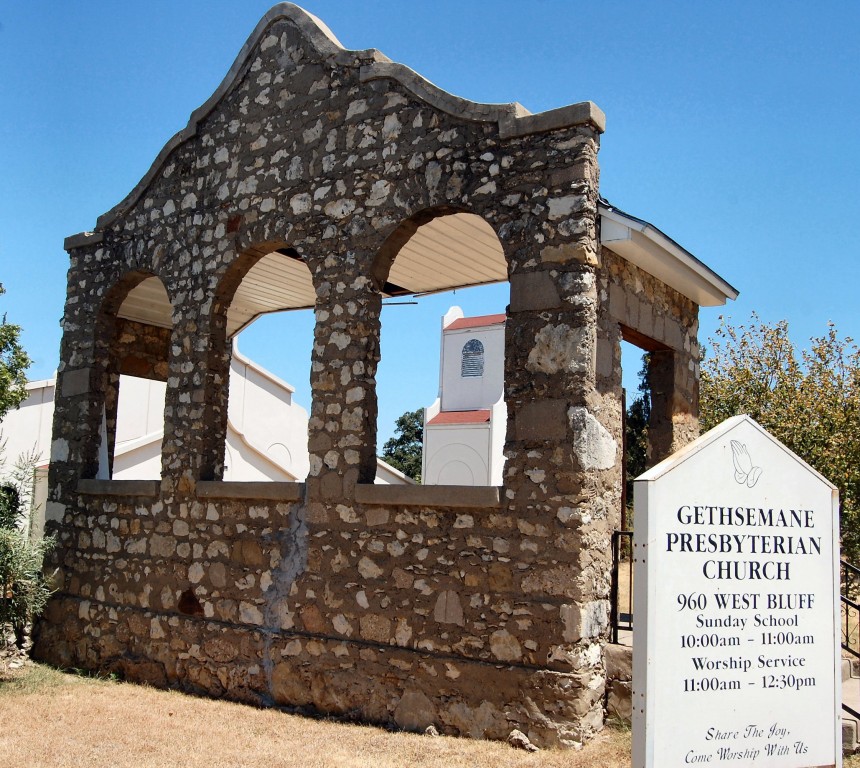 This is the mission-style stone porch of the original Mexican Presbyterian Church building.
This is the mission-style stone porch of the original Mexican Presbyterian Church building.
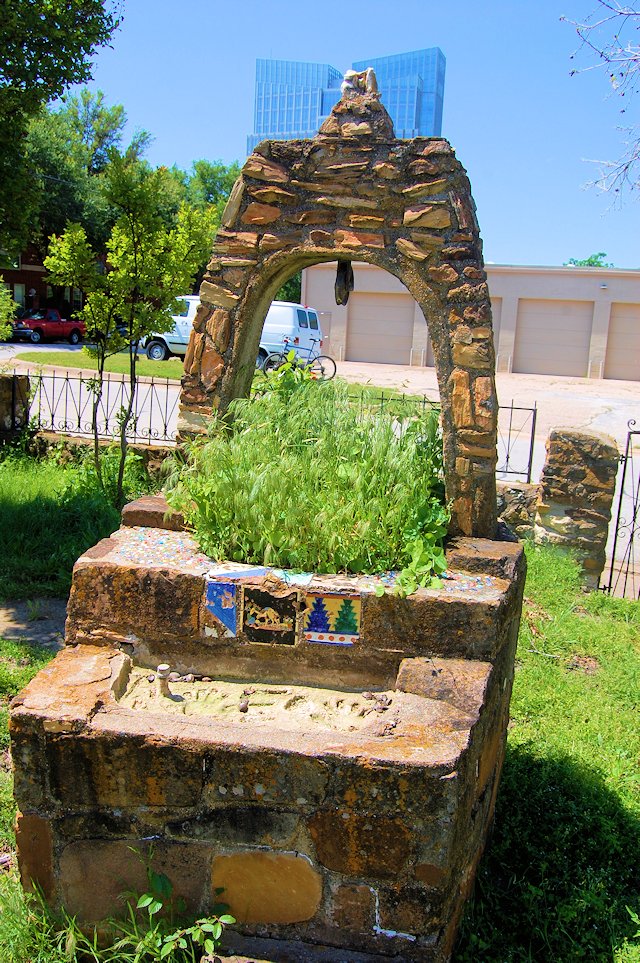 This is the stone well beside the porch.
This is the stone well beside the porch.
 According to historian Carlos E. Cuellar in Stories from the Barrio: A History of Mexican Fort Worth, Mexican Presbyterian Church was the religious center of the barrio La Corte, which evolved out of Battercake Flats, an enclave of mostly poor African Americans and some poor whites. The boundaries of the barrio changed over time, but it was located roughly from the courthouse bluff west to Lexington Street and from the river south to West Belknap Street.
According to historian Carlos E. Cuellar in Stories from the Barrio: A History of Mexican Fort Worth, Mexican Presbyterian Church was the religious center of the barrio La Corte, which evolved out of Battercake Flats, an enclave of mostly poor African Americans and some poor whites. The boundaries of the barrio changed over time, but it was located roughly from the courthouse bluff west to Lexington Street and from the river south to West Belknap Street.
The church began as a mission in 1925 when Reverend Guillermo Alexander Walls, the son of a Scottish father and Mexican mother, was hired by the Southern Presbyterian Church. At first Walls conducted services in the shade of trees in the yards of congregants.
But soon, with the help of local Presbyterian churches, Walls and his flock built a mission building on North Florence Street.
According to historian Richard J. Gonzales the mission operated a daycare center to teach English to Hispanic preschool children and to assimilate them. The mission also offered skills training and job search help, training in leatherwork and domestic sciences, help to veterans, help in applying for citizenship, and health care.
In 1927 Reverend Walls and twenty-three congregants founded Mexican Presbyterian Church at the site of the mission.
 Walls and his wife also opened a Mexican curio shop in the church, importing jewelry, pottery, and other articles to sell to the public. The profits were used to conduct mission work.
Walls and his wife also opened a Mexican curio shop in the church, importing jewelry, pottery, and other articles to sell to the public. The profits were used to conduct mission work.
First Lady Eleanor Roosevelt, accompanied by Secret Service agents, once made one of her “pop calls,” dropping in unannounced to purchase some items from the curio shop. Mrs. Roosevelt visited Fort Worth several times while her son Elliott was married to Fort Worth native Ruth Googins.
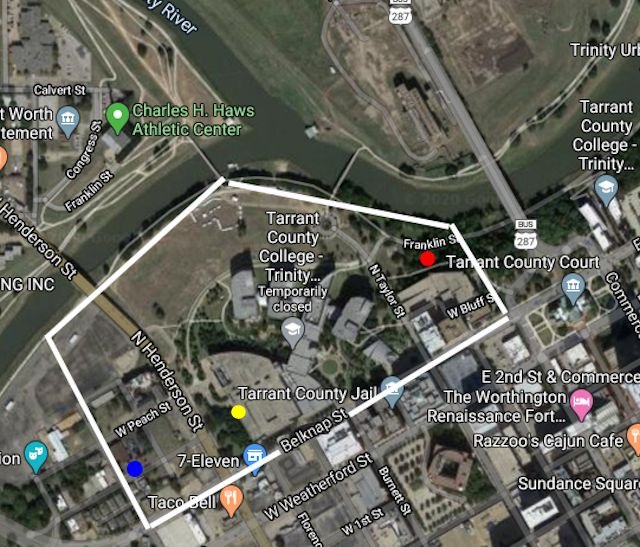 In 1941 the congregation moved three blocks west to a building that allegedly had been a speakeasy at 960 West Bluff Street. The congregation also moved its Florence Street building to the new location and converted it into an education building.
In 1941 the congregation moved three blocks west to a building that allegedly had been a speakeasy at 960 West Bluff Street. The congregation also moved its Florence Street building to the new location and converted it into an education building.
At its new location the congregation added the mission-style stone front porch to the building that had been moved from Florence Street.
The church continued to serve the barrio, opening a kindergarten and a health clinic.
The red dot locates Casa de la Corte. The yellow dot locates the first location of the mission on North Florence Street. The blue locates Mexican Presbyterian Church on West Bluff Street. The white lines show the approximate boundaries of the barrio La Corte.
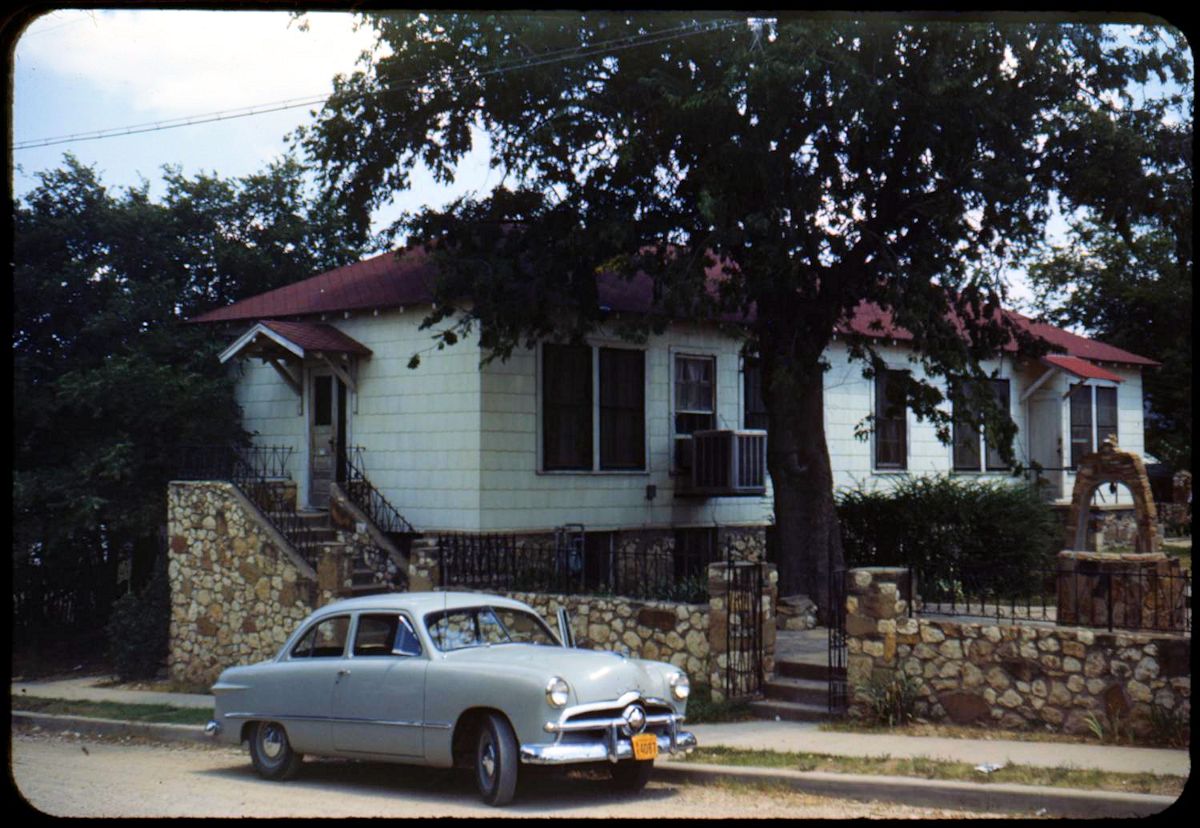 This is the building that the congregation moved into on West Bluff Street. On the right is the well. (Photo from Austin Presbyterian Theological Seminary.)
This is the building that the congregation moved into on West Bluff Street. On the right is the well. (Photo from Austin Presbyterian Theological Seminary.)
 This photo shows both buildings. In between them is the well. (Photo from Austin Presbyterian Theological Seminary.)
This photo shows both buildings. In between them is the well. (Photo from Austin Presbyterian Theological Seminary.)
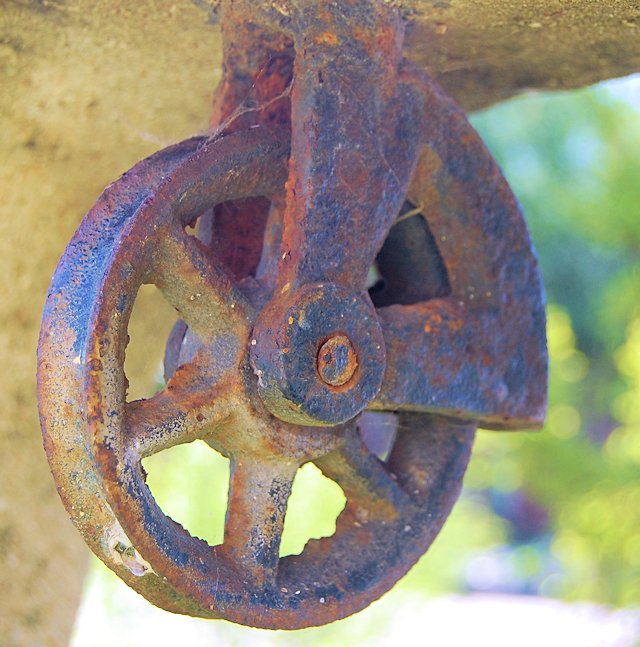
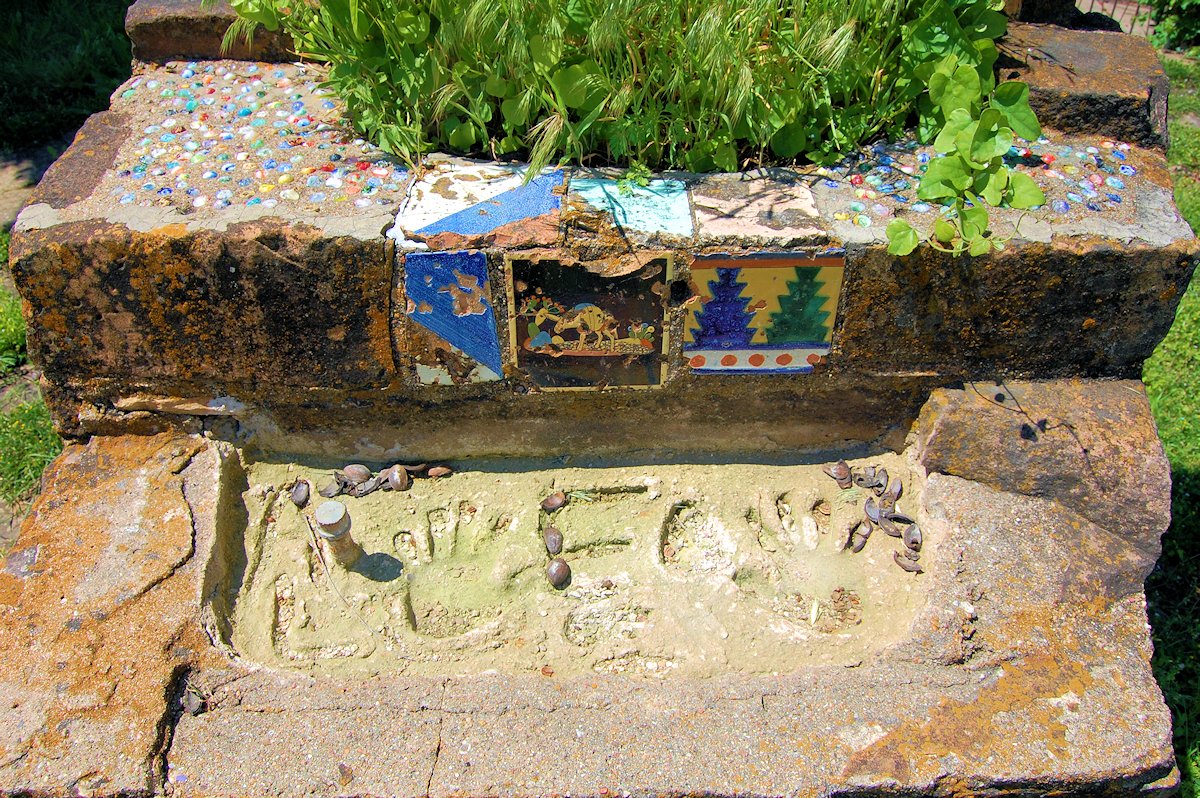 The well is decorated with marbles and tiles.
The well is decorated with marbles and tiles.
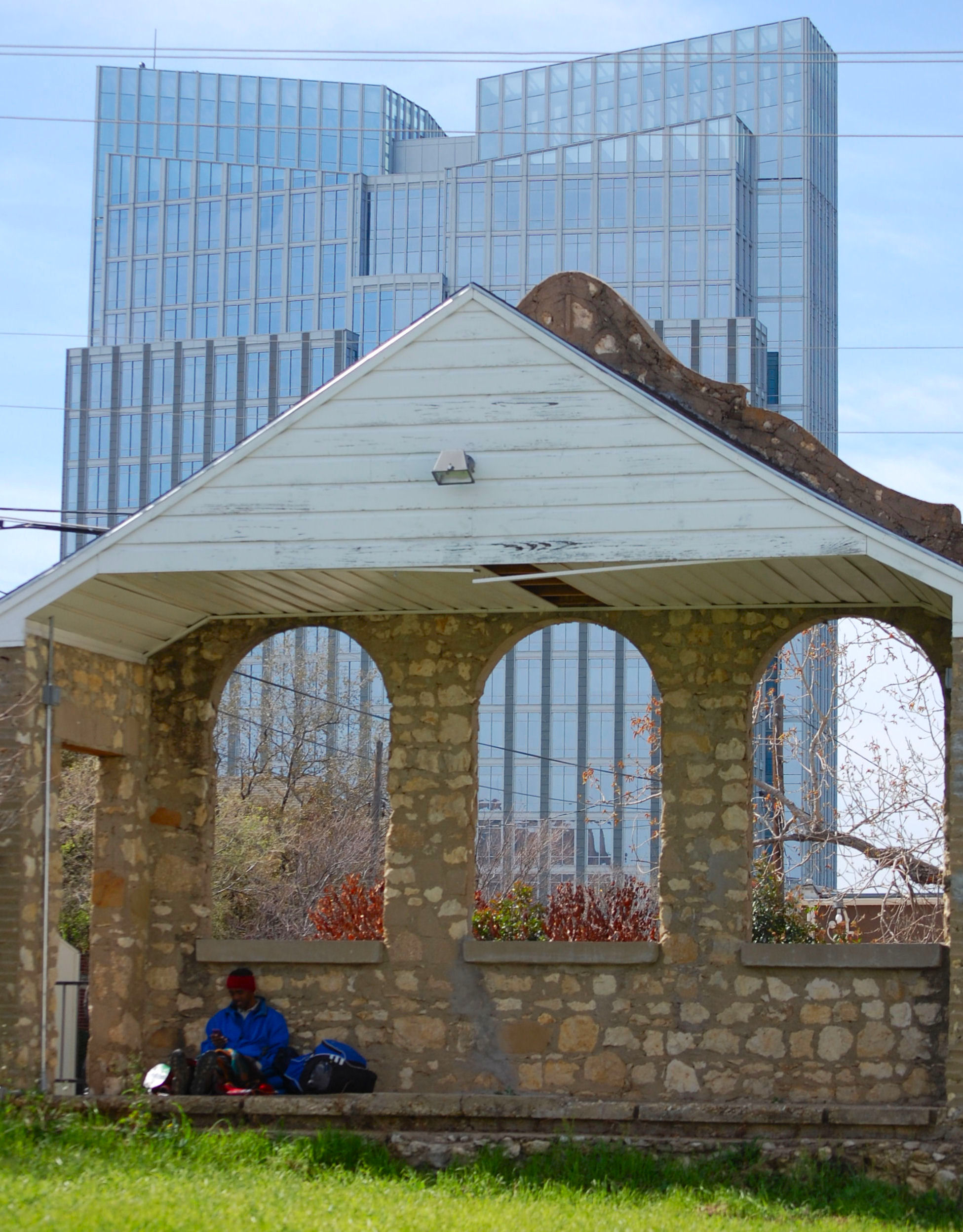
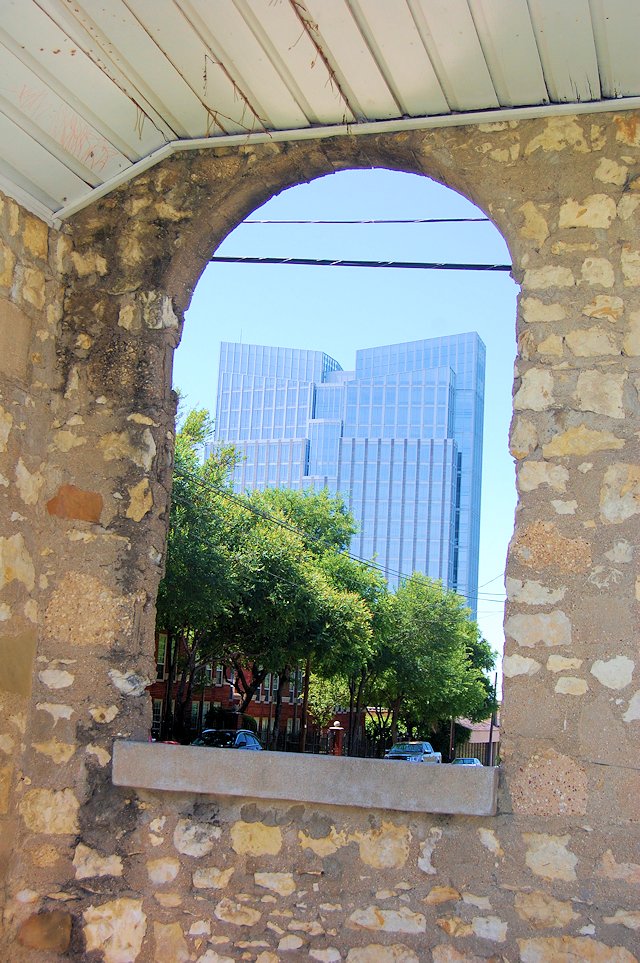 These views show the back side of the stone porch.
These views show the back side of the stone porch.
 Most of La Corte was displaced first by Ripley Arnold Place public housing project in 1941 and then by the sprawling Leonard’s Department Store parking lot in 1953. The Leonard’s shuttle buses passed Casa de la Corte (red dot) on Franklin Street. The yellow dot locates the first location of the mission on North Florence Street. The blue locates Mexican Presbyterian Church on West Bluff Street.
Most of La Corte was displaced first by Ripley Arnold Place public housing project in 1941 and then by the sprawling Leonard’s Department Store parking lot in 1953. The Leonard’s shuttle buses passed Casa de la Corte (red dot) on Franklin Street. The yellow dot locates the first location of the mission on North Florence Street. The blue locates Mexican Presbyterian Church on West Bluff Street.
Residents of enclaves such as Battercake Flats and later Le Corte faced challenges, chief among them poverty and prejudice. But there were success stories. Two of La Corte’s success stories were Manuel Jara, who grew up to own a printing company and become a neighborhood activist. An elementary school on the North Side is named for him. And Louis Zapata was Fort Worth’s first Hispanic city council member.
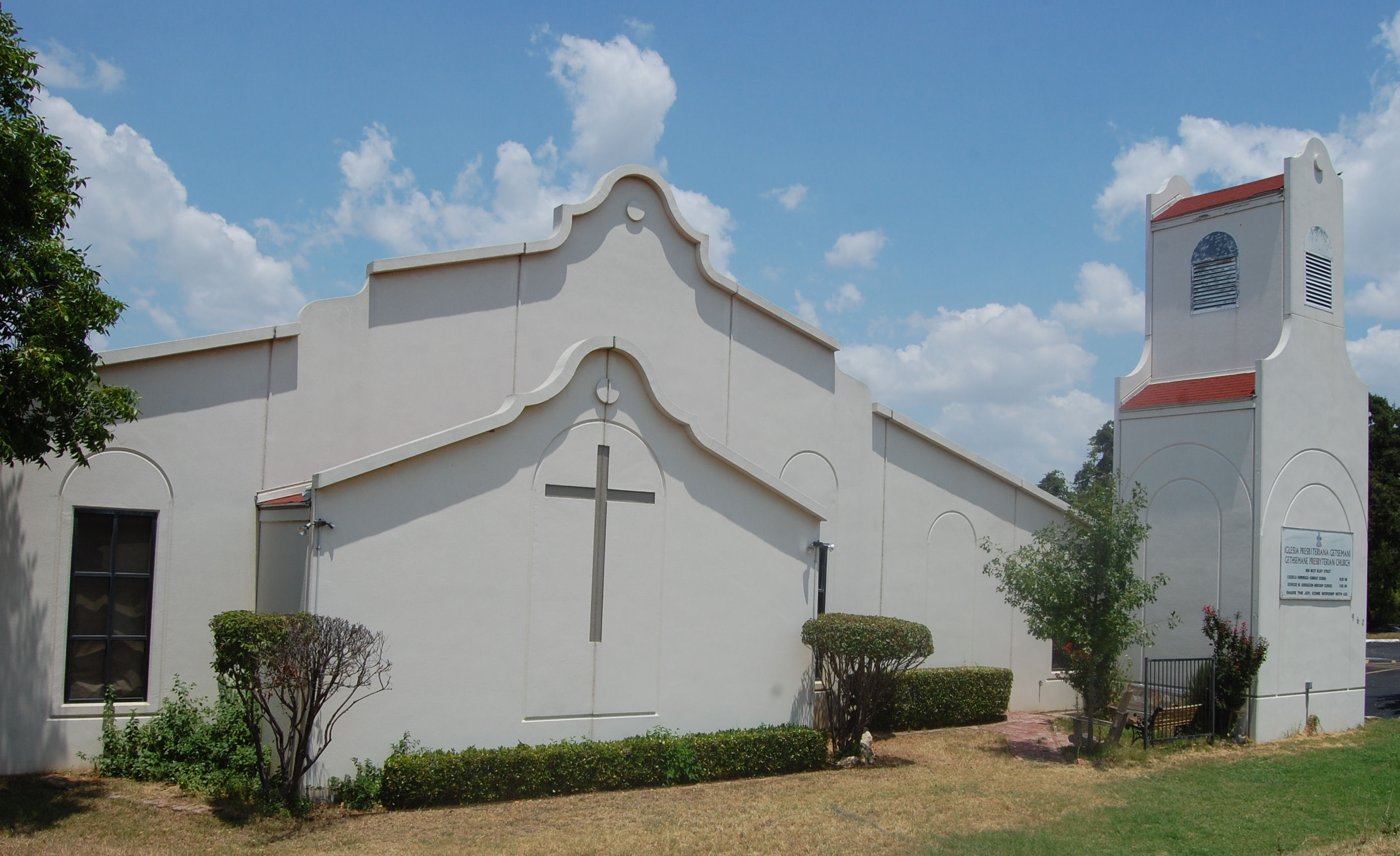 In 1958 the church changed its name to “Gethsemane Presbyterian Church” to reflect a more diverse congregation. In 1993 the two buildings were demolished, and a new sanctuary was built.
In 1958 the church changed its name to “Gethsemane Presbyterian Church” to reflect a more diverse congregation. In 1993 the two buildings were demolished, and a new sanctuary was built.
Today the church is the focal point of the two-block West Bluff Street Historic District. And its stone porch and stone well survive as reliquias of the barrio La Corte.






This is the church that my grandparents attended. I remember going to this church on holidays. I use to love the well. I wish that the church stayed original, more beautiful to me that way.
My grandparents lived in the area, not sure exactly but when the flood came through, it took their home, forcing them to relocate. From my understanding, many of the families had to relocate due to the flood.